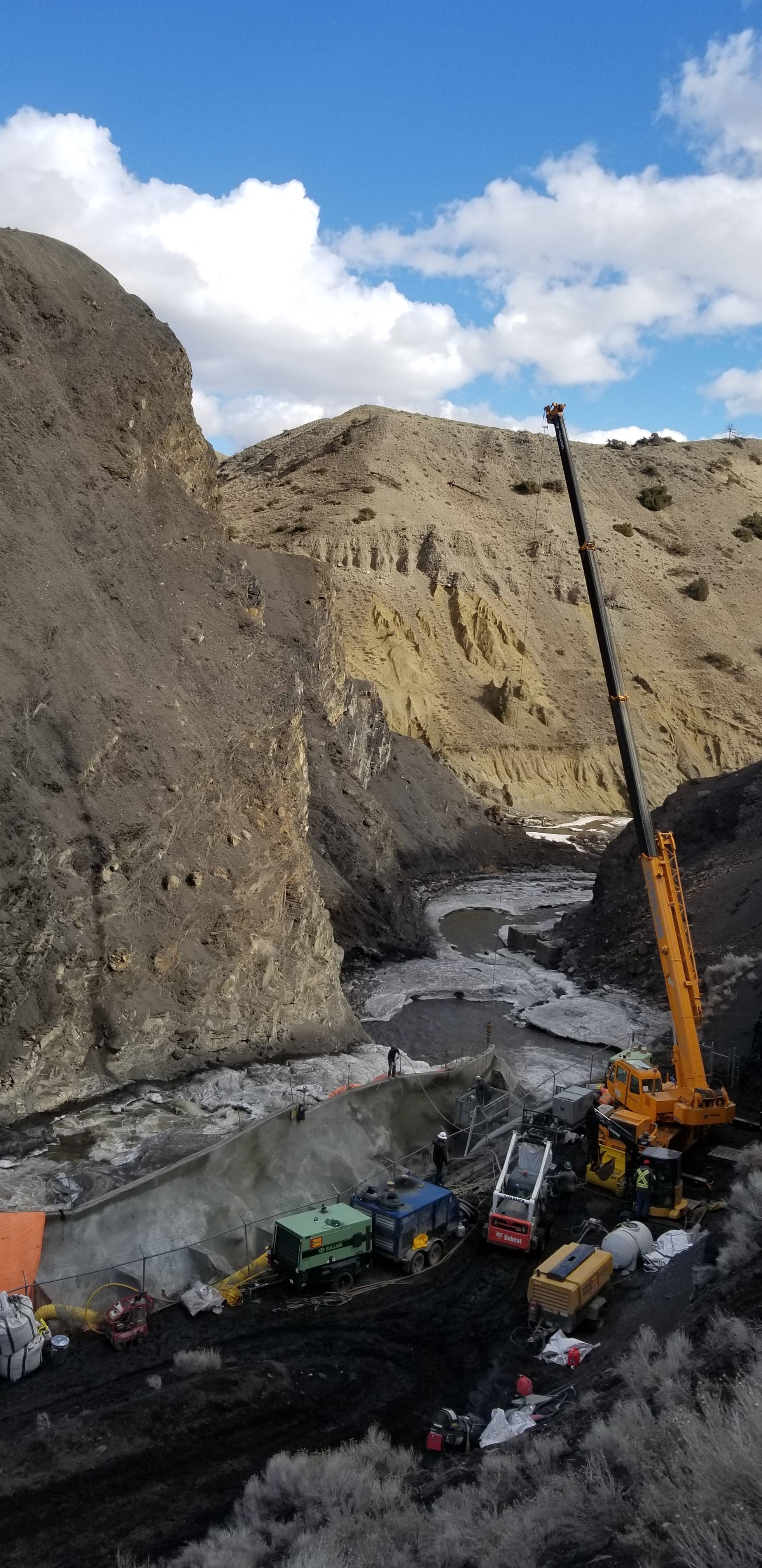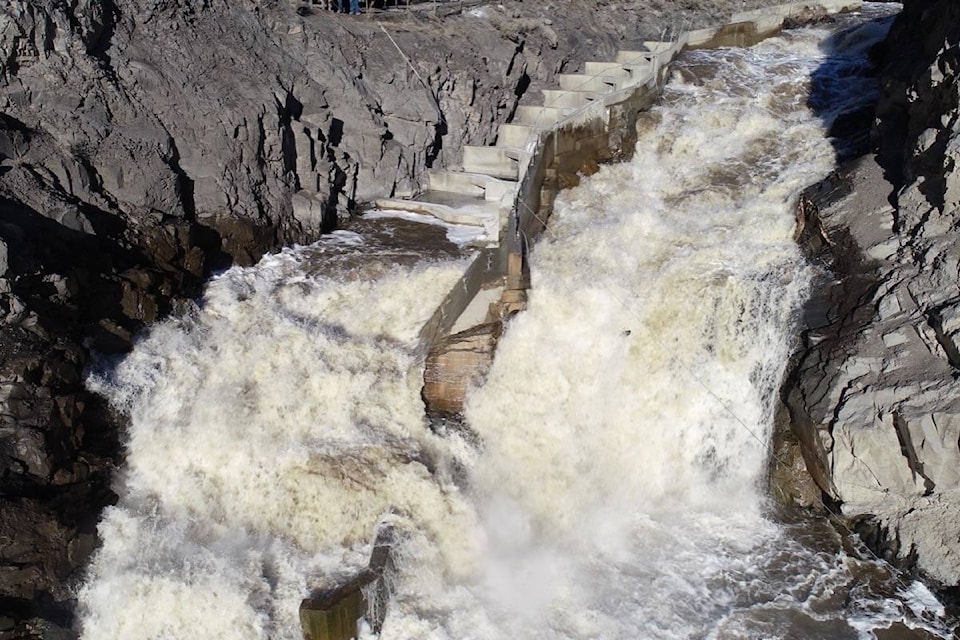Fisheries and Oceans Canada (DFO) says that it is actively working on repairs to the fishway on the Bonaparte River west of the confluence with the Thompson River, but has been hampered by high water levels and higher-than-usual water flows in the Bonaparte following the Elephant Hill wildfire in 2017.
The response comes after a report from the BC Wildlife Federation in which Harvey Andrusak, BCWF president, said that he was “furious” that the DFO had “known that this crucial fishway was impassable for months, but has not resolved the problem in time for the return of the vulnerable Interior Fraser steelhead.”
The report also stated that the Bonaparte fishway was inoperable due to heavy sedimentation and debris flows from the recent wildfires throughout the region. (See “Thompson steelhead trapped at bottom of Bonaparte River fishway”, The Journal, April 11, 2019.)
READ MORE: Thompson steelhead trapped at bottom of Bonaparte River fishway
“[Sediment] is a small part of the problem, and it’s easily addressed,” says Lee McCabe, the DFO project engineer involved with the fishway repairs. The DFO has identified the project as a high priority project and has been working to repair the fishway since August 2017. Flood events in the spring and early summer of 2018 further eroded the already undermined rock foundation beneath the fishway divider wall, significantly worsening the situation and further complicating repair options.
McCabe says that work has been hampered by conditions in the Bonaparte, as well as the difficulty in getting heavy equipment to the site. Seasonal low flows in late summer and early fall 2018 did not materialize as anticipated. River discharge levels were two to three times higher than average, which prevented completion of the repairs.
“Water levels made repairs a challenge. We need low flows. And it’s challenging terrain. The existing road [to the site] was washed-out, and had to be re-established and repaired to accommodate heavy equipment.” Rock scaling was done at the site, staging areas were built, and construction staging areas for upcoming fishway repairs were developed.
McCabe notes that the main issue is not the sediment; it is that the concrete wall that separates the main flow of the Bonaparte from the fishway sits on a bed of rocks. “The high water after the Elephant Hill wildfire has eroded the rocks under the wall, and the rocks are gone. Most of the river now flows through the fishway, and it’s too turbulent for the fish. It’s like a washing machine.”
He says that crews were working on the fishway in February and March of this year, before water levels forced them to stop. “We’re committed to the repairs, but the water levels didn’t let us finish the work. Work is suspended now while the freshet is happening, but we want to complete it as soon as possible.”
McCabe says that they will be back to work on the fishway later this summer. “I think it will be a drier year this year.”
He notes that changes to hydrology in the watershed post-fire are another challenge. “There’s nothing to soak up the water. We’re seeing unprecedented flows of about 500 per cent of the typical low-flow volume. It either makes work impossible, because it doesn’t allow people to get in to do the work, or what we do is washed away.”
McCabe says that rock anchors have been used and shotcreting and underpinning has been carried out to stabilize and reinforce the wall so that there is no further damage to it, and to prevent further erosion. There will also be a prefabricated steel structure to block the flow. “Everything is being done in combination to fix this issue.”
The steelhead are spawning now, and the fish are being transported around the fishway by provincial biologists and the Bonaparte Indian Band, with support from the DFO, which is supplying oxygenated fish transport equipment.
Optimally, the work on the fishway will be completed this year. “The fishway is paramount for us,” says McCabe. “It’s a huge priority for the department and for everyone involved. It’s been a cool job to be part of, and I can’t wait to get fish through it.”
editorial@accjournal.ca
Like us on Facebook and follow us on Twitter


